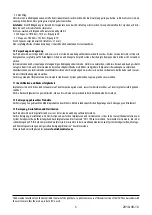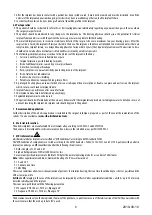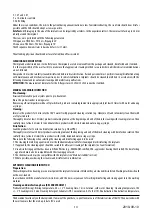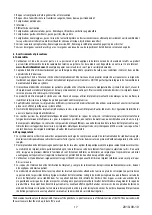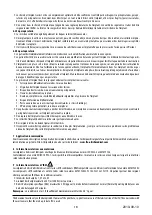
WS 2995-eIFU
R8.1/2019-03
ulrich GmbH & Co. KG
l Buchbrunnenweg 12 l 89081 Ulm l Germany
Phone: +49 (0)731 9654-0 l Fax: +49 (0)731 9654-2705
[email protected] l www.ulrichmedical.com
7
This document is valid only on the date printed. If unsure of the print date, re-print to ensure use of the latest version of the IFU. The onus resides with
the user to ensure that the most up-to-date IFU is used.
SYSTEM:
obelisc™ vertebral body replacement
LANGUAGE:
English
The only version applicable to users in the U.S. is the version intended especially for the United States.
Read all instructions carefully. Failure to follow instructions, warnings and precautionary measures
may have severe consequences or result in patient injury.
Take into careful consideration all product materials before clinical use. The required product materials
prepared as overall documentation of the system are: system related instructions for use, surgical tech-
nique and, if applicable, supplements, assembly and disassembly instructions as well as “Processing
manual implants and instruments” UH 1100.
1 Intended use
The obelisc vertebral body replacement is used for surgical reconstruction of substance defects of the anterior, thoracic and lumbar spine in
humans. Additional stabilizing instrumentation is necessary, for example, with a pedicle screw-rod-system.
2 Product description
The obelisc vertebral body replacement is intended for surgical reconstruction of substance defects of the anterior thoracic and lumbar spine.
Defect expansion can be performed in situ with the obelisc implant. The obelisc center pieces are continuously expandable, so enabling a
defect of up to 132 mm to be bridged. Thus one or more vertebral bodies can be replaced. The required height of the obelisc implant is adjusted
precisely in situ via a bevel gear drive in the inserter. The implant maintains the set height. This can only be changed by turning the bevel
gear further. Final fixation is performed by means of a locking screw. Thanks to its space-saving expansion mechanism, the obelisc implant
can be used in a minimally invasive manner. Obelisc consists of a center piece with corresponding end pieces, and is available in various sizes.
The different obelisc end pieces enable a maximum supporting surface. A free choice of approach is possible thanks to the variable assembly
of the end pieces. The teeth on the end pieces facilitate an improved grip in the vertebral body end plates. The implant only absorbs the axial
compression force and always needs to be combined with a posterior or ventral stabilization system.
3 Indications
Complete or incomplete corpectomy due to destruction of a vertebral body by e.g. tumor, fracture or inflammation.
4 Contraindications
Patients with acute infection, whether superficial or deep
Patients with fever or leukocytosis
Patients with obesity
Patients with a history of material allergy or who tend to react to foreign bodies
The physician must consider carefully before treating patients who are in a generally unfavorable medical or psychological state and who
could be made worse by the procedure
Patients with inadequate bone quality or quantity (e.g. severe osteoporosis, osteopenia, osteomyelitis)
Pregnancy
5 Possible side effects
Possible complications associated with the implant are:
Implant loosening, dislocation and/or implant failure
Local or systemic reactions due to material intolerance
Failure of bony fusion
Adjacent segment degeneration
These possible complications may lead to further surgical interventions (implant removal or stabilization renewal).
Other complications which may be caused by the surgical procedure itself and independent of the implant are:
General surgical risks and complications
Anesthesia and blood transfusion risks as well as positioning damage
2019-09-10





